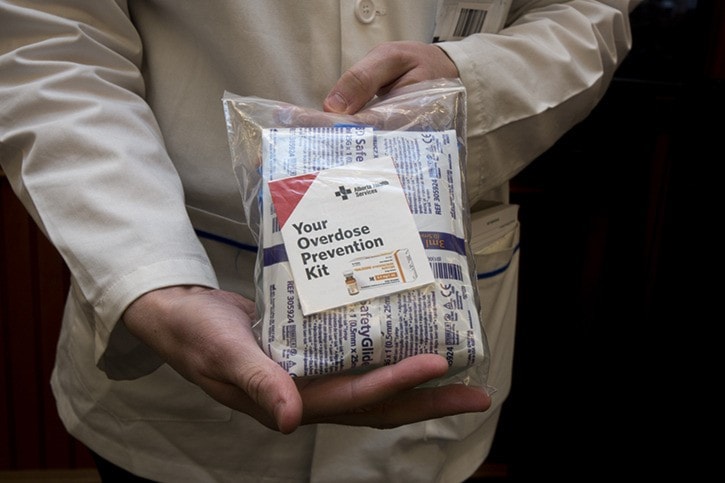Alberta’s Chief Medical Officer of Health, Dr. Karen Grimsrud, and Acting Chief Medical Examiner Dr. Elizabeth Brooks-Lim are notifying the public that the toxic opioid carfentanil is still circulating in our province and has been linked to 15 drug overdose deaths.
Fourteen of those 15 deaths occurred between September and the end of November.
Alberta remains focused on harm reduction as it moves forward with a co-ordinated and collaborative provincial response to the opioid crisis.
When combined with prevention, treatment and enforcement, a broad spectrum of harm reduction approaches will help decrease harmful consequences of drug use to keep people alive.
“I am deeply concerned about the increasing number of deaths associated with carfentanil," said Dr. Grimsrud. "It’s possible these individuals were not aware they were taking it. Albertans need to know that carfentanil is here – in Alberta cities and towns – and that it’s an extremely dangerous and deadly opioid. Even the smallest trace can be lethal.”
Working closely with other Alberta government ministries, health experts, community groups, parent advocates, law enforcement and the medical community, the Chief Medical Officer of Health is leading a collaborative and co-ordinated provincial response, focused on four key areas:
- Improving the collection and publishing of data to better target interventions
- Expanding access to opioid replacement therapy.
- Funding community agencies to assess the need for supervised consumption services.
- Promoting appropriate opioid prescribing and implementing new tools to prevent prescription drug misuse, in partnership with the College of Physicians and Surgeons of Alberta.
Other provincial responses to the opioid crisis have included publicly funded take-home naloxone kits are available at more than 900 registered sites, including community pharmacies. A new public awareness social-media campaign has been rolled out. It explains how to use naloxone to prevent overdose deaths and where people can get naloxone free of charge.
The province has invested $3 million over the next three years for an opioid dependency treatment (ODT) expansion project. Work is under way to increase access to opioid replacement therapy in Alberta Health Services ODT clinics.
If you are using these types of drugs:
- Don’t use them alone and make sure you are near someone who can call for help.
- Don’t mix them with other drugs or alcohol.
- It you suspect someone is overdosing, don’t wait. Dial 911 right away.
- Carry a naloxone kit. Know how to use it to save someone’s life. Make sure your buddy knows how to use it to save yours. Naloxone is a temporary fix – you still need to call 911.
- Most importantly, know there are resources available to help you whether you are using drugs for the first time or have used them frequently.
- If you’re concerned about your own or someone else’s use of illicit drugs, call the Addiction Helpline (24 hours a day, seven days a week) at 1-866-332-2322, or Health Link at 811.
